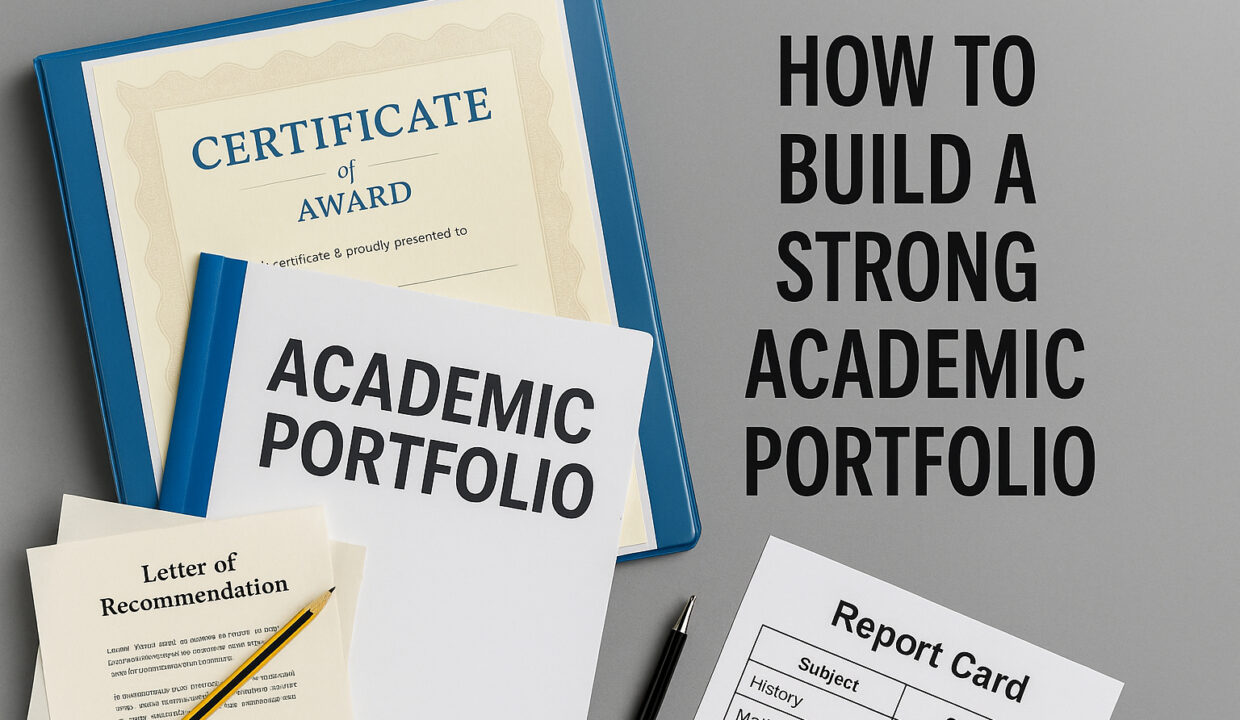
An academic portfolio is more than just a collection of grades and certificates—it’s a reflection of your skills, achievements, and potential. Whether you’re applying for higher education, scholarships, or research opportunities, a well-prepared portfolio can set you apart from other candidates. Here’s a step-by-step guide to help you build a strong academic portfolio.
1. Understand the Purpose of an Academic Portfolio
Before you start compiling documents, clarify your goal. Are you applying to a university, competing for a scholarship, or presenting yourself for a research project? Knowing the purpose helps you tailor the portfolio to highlight the most relevant skills and accomplishments.
2. Showcase Academic Achievements
Your portfolio should include:
-
Transcripts & Report Cards – Highlight consistent performance and key strengths.
-
Certificates & Awards – Academic competitions, Olympiads, or excellence awards add credibility.
-
Major Projects & Research – Include abstracts, reports, or summaries of research papers and assignments.
3. Highlight Extracurricular Involvement
Admissions committees and scholarship boards look for well-rounded candidates. Include:
-
Participation in clubs, student councils, or organizations.
-
Volunteer work and community service.
-
Sports, arts, or cultural achievements.
These show leadership, teamwork, and time management skills beyond academics.
4. Add Letters of Recommendation
Strong recommendations from teachers, mentors, or supervisors can add weight to your portfolio. They provide insight into your character, dedication, and potential from a third-party perspective.
5. Include Personal Statements and Reflections
A portfolio isn’t just about documents—it’s about your story. Add:
-
A personal statement explaining your academic journey and goals.
-
Short reflections on what you learned from major projects or activities.
This helps admissions officers see not only what you achieved, but how those experiences shaped you.
6. Organize Professionally
A cluttered portfolio can undermine even the strongest achievements. Keep it:
-
Well-structured: Use clear sections (Academics, Extracurriculars, Projects, Recommendations).
-
Visually clean: Use consistent formatting, fonts, and spacing.
-
Updated: Remove outdated or irrelevant items.
If submitting digitally, consider creating a PDF or an online portfolio with clickable sections for easy navigation.
7. Tailor for Each Opportunity
Don’t send the same portfolio everywhere. Customize it depending on the requirement—emphasize research for a fellowship, or leadership for a scholarship.
Final Thoughts
A strong academic portfolio is not just a record of what you’ve done—it’s a strategic presentation of your abilities and aspirations. By thoughtfully compiling achievements, extracurriculars, and personal reflections, you can create a portfolio that leaves a lasting impression and opens doors to academic opportunities.

